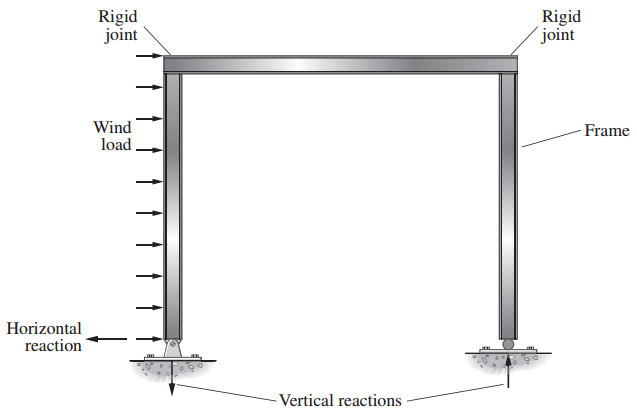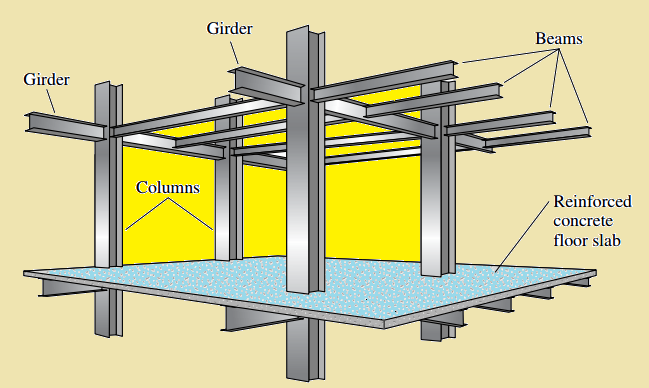Structural Forces
A structural system is acted upon by forces. Under the influence of these forces, the entire structure is assumed to be in a state of static equilibrium and, as a consequence, each component of the structure also is in a state of static equilibrium. The forces that act on a structure include the applied loads and the resulting reaction forces.
The applied loads are the known loads that act on a structure. They can be the result of the structure’s own weight, occupancy loads, environmental loads, and so on. The reactions are the forces that the supports exert on a structure. They are considered to be part of the external forces applied and are in equilibrium with the other external loads on the structure.
To introduce loads and reactions, three simple structures are shown in the following Figures:


The beam shown is supporting a uniformly distributed gravity load and is itself supported by upward reactions at its ends. Figure 2 shows a building frame subjected to a lateral wind load. This load tends to overturn the structure, thus requiring an upward reaction at the right-hand support and a downward one at the left hand support. These forces create a couple that offsets the effect of the wind force.
